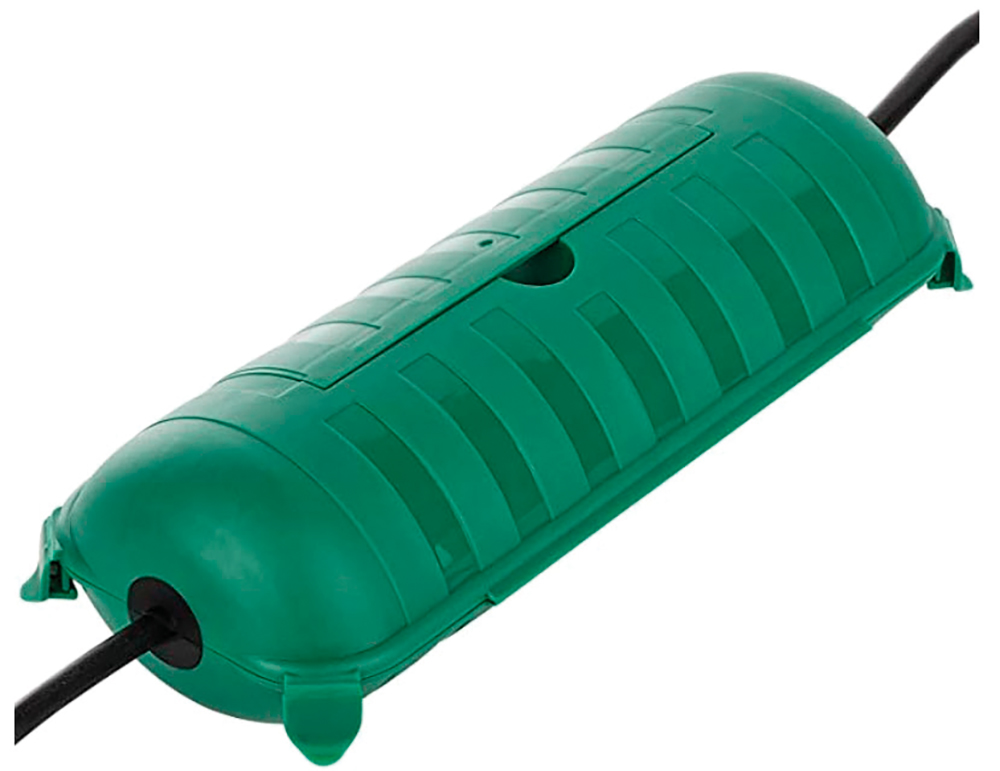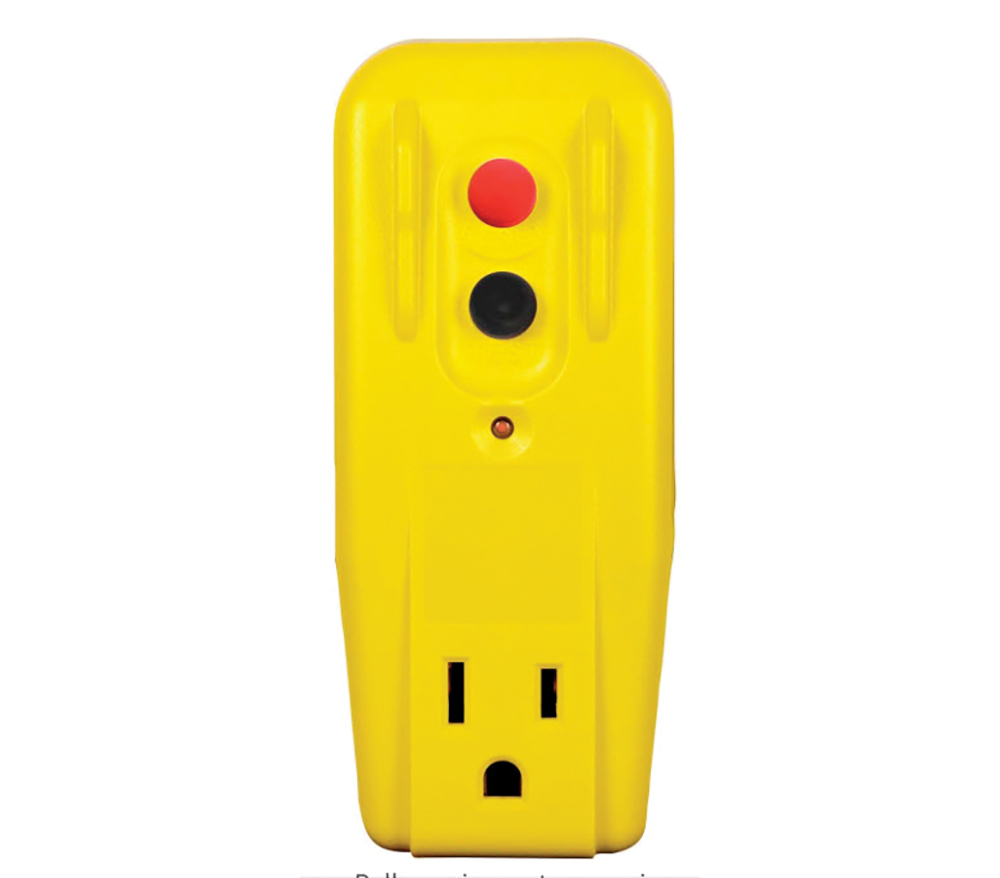
Electricity and water don’t mix. Many people don’t realize it, but having a 120 volt AC in your sukkah can be dangerous. Even when wiring like an extension cord gets wet, it can be problematic. Many people will use indoor lighting fixtures hanging from the schach without realizing water entering the device can start a fire or even be fatal. A few simple precautions can save a life or prevent an injury.
The first rule: Never use an indoor device outdoors; whatever lighting is used should be designed and sold for outdoor use. The second rule: Any outdoor lighting should have an Underwriter’s Laboratory approval, the UL symbol as shown on the diagram at the end of this article.
If you have to use an extension cord where you plug in your lights, or whatever device you are using, use a waterproof extension cord cover (figure 1) which is available for anywhere between $4-$10. If the junction of the lighting plug and the extension cord gets wet, and the cables are wet, you become the ground connection that could prove fatal. There are also devices that will allow you to safely connect more than one outlet when running strings of lights.

Next, no outdoor electrical circuitry should be used without what is known as GFI protection. GFI stands for Ground Fault Interrupter. In the event someone comes in contact with 120 volts of electricity and completes the circuit somehow, it will trip the circuit much like a circuit breaker. Some outside outlet boxes have this feature built in. If yours is an older box, it may not have that protection. You can buy a plug-in GFI device (figure 3) for those outlets that are not so protected. One caveat here, never plug one of these GFI devices into an extension cord, they must go directly into your house socket and then you plug the extension cord into it.
Additionally, you can buy combination devices that have both weather protection and a GFI protector in one cord. They come in various cable lengths. An example is shown on the left. Any of these devices can be purchased from Home Depot, Lowe’s or even Amazon. But we can’t just stop here, there are additional steps that should be taken.
Depending on how the wires are run, there can be an accumulation of water around the plugs. To avoid this, we use something called a drip loop. It is simply a dip in the wire to let water drain off at the lowest point. You will see something similar to this if you look where the power from the electric company runs into your house, unless you have underground wiring. PSE&G does that so that water will not seep under your siding and into the exterior wall of your house.
Of course, never leave bare wires exposed. If the extension cord or wire from the device is frayed, or has bare wiring, toss it out—don’t even attempt to use it.

The following diagram will demonstrate some of the items we went over in this article. Chag Sameach!
Jonathan Weber, now retired, was a member of the Technical Staff at AT&T Bell Laboratories, a former design engineer of Digital Projects for Quantem Corporation, System Test Laboratory Facilities Manager for Tyco Submarine Systems as well as their Assistant Safety Director, taught math and science at Breuer’s Yeshiva in Washington Heights, a professional photographer, a former radio newscaster, and reporter for The Link News (no relation to The Jewish Link) in Monmouth County.










